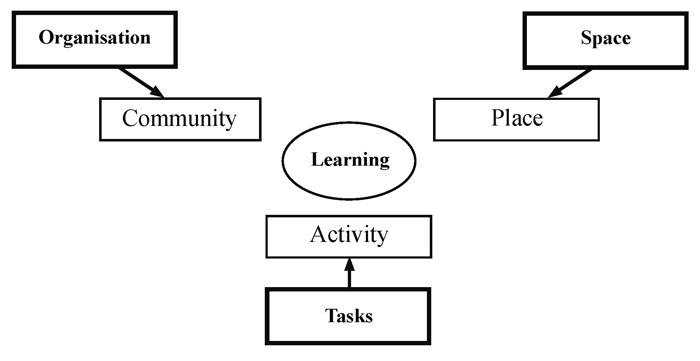Personal notes about the Jones and Asensio (2001) article:
In order to work together there has to be an understanding of each other’s intentions.
It has been argued that there is a relationship between the approach adopted by a
teacher and the students’ experience.
‘The relation between teachers’ experiences and their students’ experiences is such
that university teachers who adopt a conceptual change/student-focused approach to
teaching are more likely to teach students who adopt a deep approach to their
learning, while teachers who adopt an information transmission/teacher-focused
approach to their teaching are more likely to teach students who adopt surface
approaches to their study.’ (Prosser & Trigwell, 1999, p. 162)
Phenomenography is a qualitative research approach. The term originated in the
work of Marton who explained phenomenography as an approach for understanding
people’s ways of experiencing the world.
The aim of phenomenography is to describe qualitatively different ways of experiencing phenomena, in this paper networked learning.
The findings reported here draw together two separate elements of the project research. The aim is to show that the issue of assessment is a live and problematic issue for designers generally and then to investigate the possible problems inherent in the use of assessment for design purposes in one particular example.
The approaches adopted by practitioners
“it’s still extremely difficult to design an on-line environment an on-line course, on-line activities in ways where you are not surprised and/or disappointed by the output.’ (John)
The practitioners’ strategies focused on including more and tighter controls over learners’ choices and the pace of their contributions. Practitioners were concerned with how to organise students and how much to organise students.
The practitioners expressed concerns with how to organise students so that the students could anticipate each other’s actions and co-ordinate their work.
This preliminary work with practitioners draws attention to the use of assessment criteria. Because practitioners of networked learning believe they can affect student behaviour by altering assessment criteria amongst other features of course design, it is worth examining the students’ understanding of assessment requirements in detail.
The approaches adopted by the students
‘it is possible to use assignments as a vehicle for encouraging students to adopt newpatterns of learning, whilst at the same time covering course content.’ (Macdonald et al., 1999, p. 352)
For this aim to be achieved students needed to have had a clear and commonly held understanding of the course designers’ intentions.
The assessment criteria are interpreted by students in a wider context that is not in the course design team’s control. Courses in the Open University (UK) can be taken in any order. This flexibility is in accordance with the aim of networked learning but it makes the task of the design and preparation of standard documentation more difficult.
The range of experience is large and the course documentation is aimed at students who have many external factors influencing their interpretation of standard materials.
Conclusions
Practitioners in networked learning environments use assessment as a device for attempting to control their uncertainty about student responses to design.
The students’ comments indicate that this common understanding amongst the students was related to the use of networked learning and the relative novelty of this approach. In this way uncertainty returns to design because students were influenced by factors external to the assessment criteria.
It points to a general problem with assessment criteria that no document however detailed or clear can provide for the interpretation given to it by a reader.
The general comments on documentation may however, indicate that networked learning has additional constraints because the interpretation of context by students is more vulnerable to the variations in setting that distinguish networked environments.
This suggests that the phenomenographic emphasis on variation could have implications for the evaluation of networked learning environments:
- a definite relationship between teachers’ intentions and students’ experiences
- evaluate the suitability of a relational approach to design.
- teaching interventions are necessary to negotiate understanding ‘on the fly’
- a cautious attitude needed to be adopted to reliance on the use of course documents
in a networked environment.
